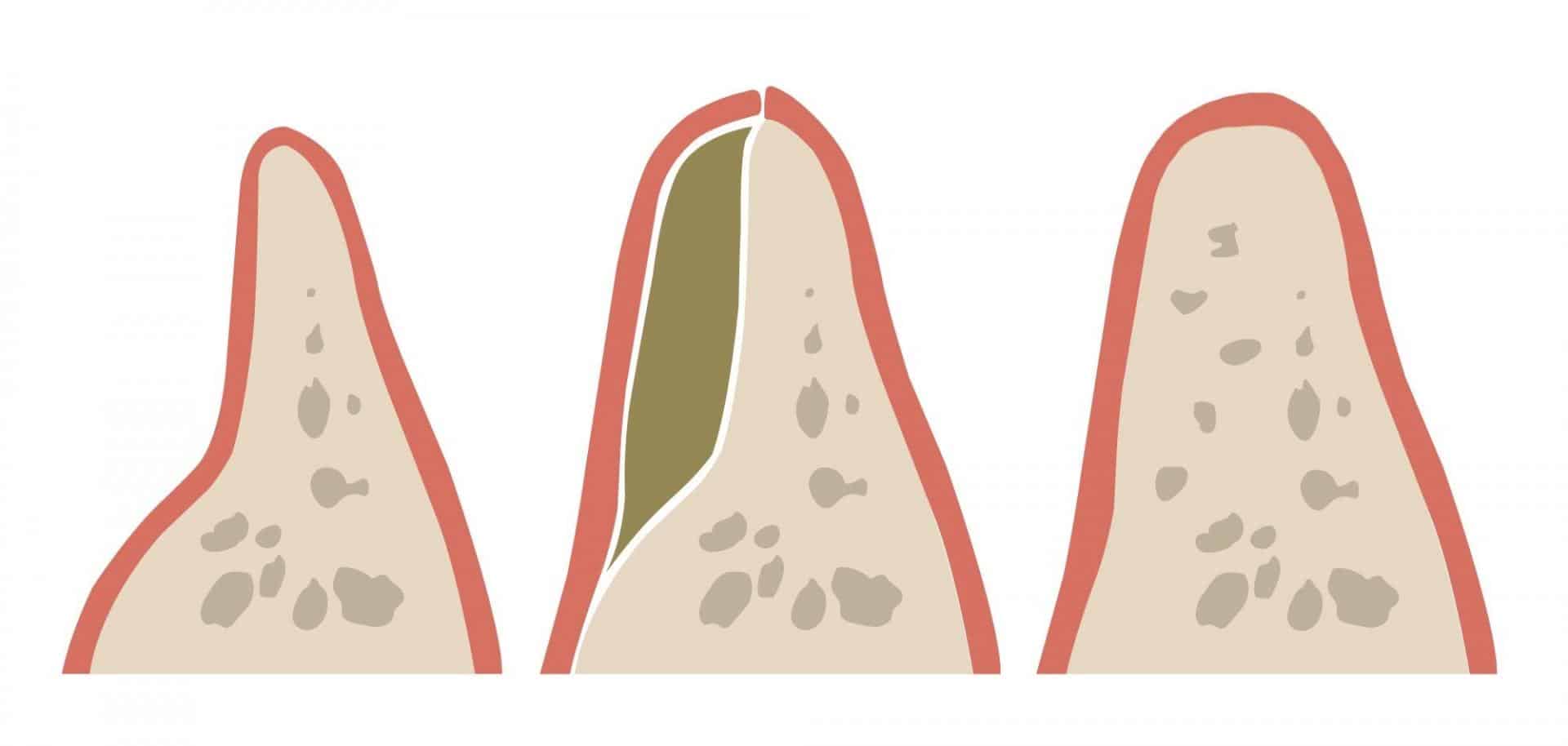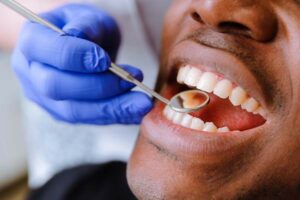What is it and how does it affect me?
A common contraindication for dental implants is bone loss. This is a condition that essentially means that the density and quantity of bone in the maxillary (upper) or the mandibular (lower) bone is below normal levels. Now, the jaw bones are organic structures that, like a muscle, require stimuli in order to maintain their shape and bulk. These stimuli are basically the chewing and biting function of the teeth held in place by these bones. It is for this reason that where there is a lack of stimulus the bone will shrink and narrow. Bone loss is irreversible and its only treatment is to eliminate its cause and regenerate bone though artificial grafts. Bone loss is caused by a variety of factors, of which the most common are tooth loss, bruxism, periodontal disease, and infection.
Bone loss in relation to tooth loss.
Teeth are living structures, and they react when there is a change in the mouth. For this reason, teeth will shift towards the midline if there is a new missing space besides them. They will also erupt if there is no opposing tooth. In a similar fashion, the jaw bones collapse when there are no chewing forces in an area. When a tooth has been missing for a considerable time, the lower bone usually becomes so narrow it cannot hold the diameter of an implant and the upper becomes so short it cannot hold its height.
Bone loss in relation to bruxism and trauma
Continual and untreated bruxism can lead to bone loss too. The jaw muscles are some of the muscles with greatest strength in the entire body. Continual grinding is equivalent to continual exercise and so the force employed in the normal action of chewing is superior to normal standards. Now, not only the teeth receive trauma from this but also all the organic structures associated with them, including the jaw bone. When the bone is injured due to trauma it reacts by resorption and consequent bone loss.
Bone loss in relation to periodontal disease
Periodontal disease is a silent dental condition that slowly eats away bone and soft tissue. Hard plaque and calculus around and beneath the gum cause inflammation and bleeding. As the condition advances, it causes pockets in which bacteria and food gets trapped and release toxins that cause further irritation and bone loss. If left untreated, the loss can become so severe that the roots of teeth are exposed and the teeth become loose due to lack of support.
Bone loss in relation to infection
Just as bacteria eats away bone in the periodontal illness, it does so in infections. These are caused by bacteria infiltrated through various reasons into the bone structures. When it settles there, it eats away the bone cells, creating a progressively large cavity as bacteria multiply. The only way to stop this process is to remove the cause of the infection and restore the bone loss with grafts.
There must be a minimum of bone density in order to place any implant with success. Dental implants act like tooth roots that slow or stop the process of bone resorption. Contact us right away in order to know if you are a candidate for dental implants.




